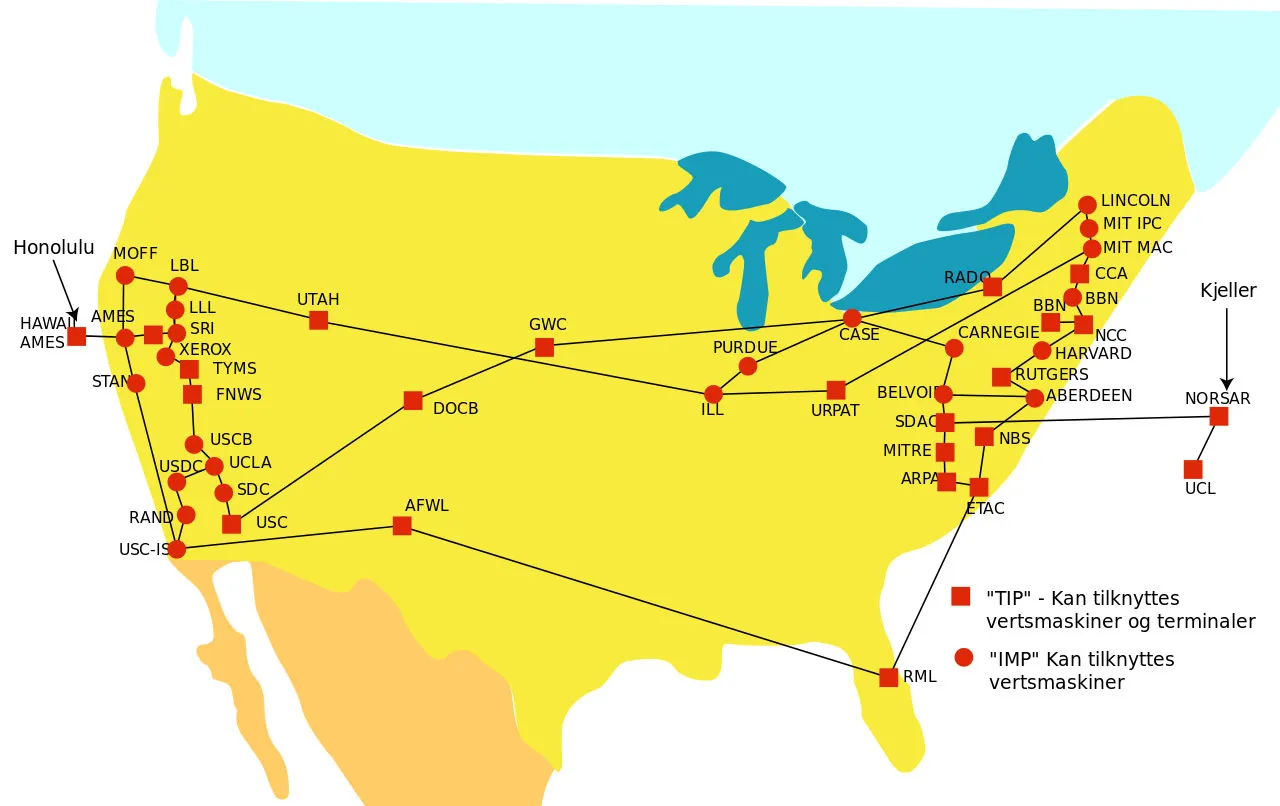The internet is truly a wondrous thing. It’s almost hard to conceptualise it in its current state; estimates suggest there are about 1.14 billion websites in the world, around 83% of which are still active. Whether you want travel tips, marketing advice, or recipes, the internet is pretty much the premier destination for most people now, but it all has to have come from somewhere, right?
It’s tempting to believe that one single person invented and popularised the internet, and while there’s a degree of truth to that, the reality is, of course, much more complicated. We can trace the internet’s origins back to the 1960s, believe it or not, and while a lot of the details regarding its invention are difficult to understand if you’re not tech-savvy, it’s an interesting history nonetheless. Let’s take a look at who created the internet!
Early history: the 1960s
When we say “early history”, we are, of course, referring to the early history of the internet, not early history in general. Computer technology goes all the way back to the early 19th century, when Charles Babbage proposed the Analytical Engine and Ada Lovelace proposed her Difference Engine alongside Babbage.
With that in mind, it shouldn’t be too shocking that there were, indeed, computers in the 1960s, although they were massive and unwieldy things. It was difficult to transfer information between computers without physically moving them from site to site, which, obviously, wasn’t ideal considering how big they were.
That’s why research into something called “packet switching” began. In essence, this is the technology that allows computers to communicate over long distances. This was first achieved in 1965, when scientist Lawrence Roberts successfully made two computers communicate across a distance. He did this using telephone lines, which is why the first modems utilised phone lines as well.
ARPANET

In the 1950s, President Eisenhower had expressed concern about what might happen if a Soviet attack (as this was during the height of the Cold War) knocked out all American military communications. Eisenhower believed a network with which computers and other technology could communicate would be beneficial, and so he formed ARPA, the Advanced Research Projects Agency.
The first network to successfully utilise packet-switching technology to get computers to talk to one another was, therefore, called ARPANET. This network was created in the late 1960s, during which time the US was also riding high thanks to its impending success in the space race.
As you can imagine, being a denizen of the internet era, ARPANET caught on like wildfire. Before long, academic institutions, research facilities, and other important companies had joined ARPANET, connecting more than 25 bodies from countries all over the world. This was the birth of something special, and it’s probably the moment one should point to if one wants to pinpoint the birth of what we now know to be the internet.
Expansion: the 1970s and 1980s
ARPANET’s technology was, of course, incredible, but it wasn’t sufficient for communications of the magnitude and scope emerging during the expansion of the network. For that, a new type of communication technology would need to be invented, and that’s where what we now know as TCP/IP (Transmission Control Protocol/Internet Protocol) came in.
TCP/IP was created by two scientists by the names of Vint Cerf and Bob Kahn, both of whom are still with us and still very much interested in the technological world. Before the invention of TCP/IP, computers were essentially talking in different languages; they were able to communicate with one another, but the communication style was somewhat primitive.
With the invention of TCP/IP, computers could talk to one another in languages that both ends understood. Naturally, this technology completely revolutionised the way ARPANET worked, and the network was able to expand far beyond its relatively humble beginnings. It could now incorporate entire networks in and of itself, and that’s exactly what happened.
Consumer technology: the 80s and 90s
The invention of this technology, as well as more commercially viable computer hardware, allowed people to build their own local networks and not to rely on ARPANET. This was the birth of the commercial internet as we know it. Networks began springing up everywhere, utilising TCP/IP to let each constituent machine talk to the others on the network.
Due to these technological advances, a new system was needed to help networks keep track of the machines on them. That’s where DNS (which stands for Domain Name System) came in. Using this system, IP addresses could easily be converted into names, which were much simpler to keep in mind than the strings of numbers that usually make up IP addresses.

It was DNS that made it possible for English scientist Tim Berners-Lee to invent the World Wide Web, the protocols of which laid the groundwork for the modern internet age. Essentially, Berners-Lee’s proposition involved a way to catalogue and process all of the information available on a network, which would make it possible for everyone around the world to access the information on that network.
Berners-Lee is the reason that websites contain “www” at the start, and he’s also the person who created the HTTP protocol, which we still use today (albeit with added security protocols). It’s also thanks to Berners-Lee that websites use hyperlinks to connect to one another, and we still use that technology today as well. In many ways, Berners-Lee is the father of the internet, although as we’re sure you can see, he’s not the only person responsible for it.


